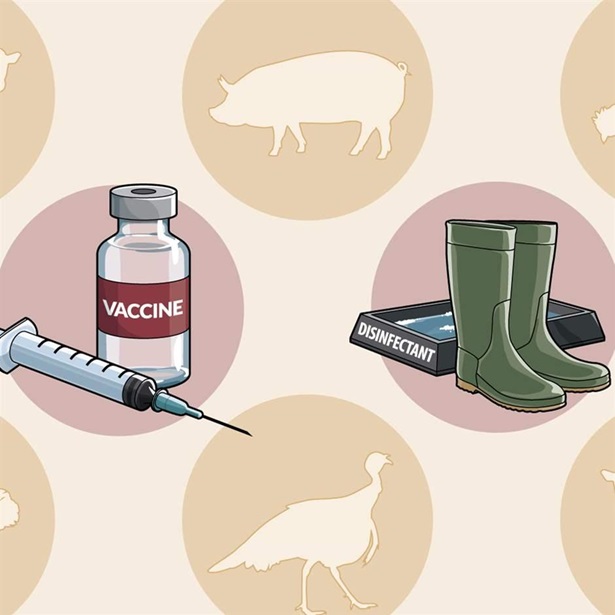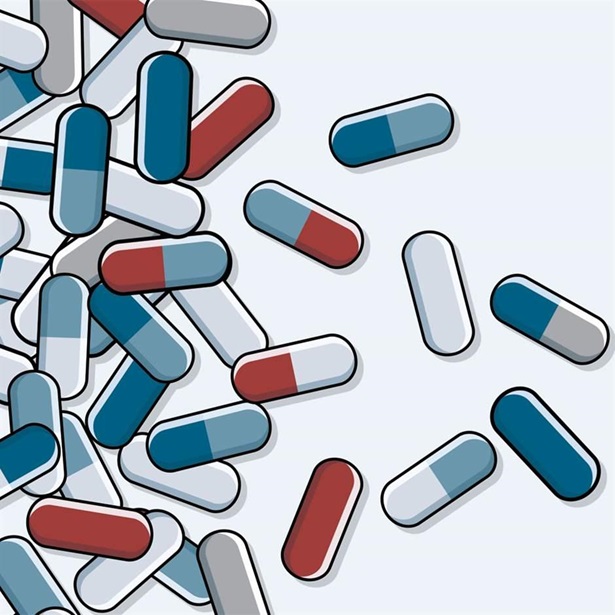Meat and Poultry Safety Regulations Should Reflect Latest Science
A Q&A with Michael Taylor, former head of USDA’s Food Safety and Inspection Service

The U.S. Department of Agriculture has overseen the safety of meat and poultry and has inspected facilities producing these foods since 1906, but it did not require slaughter and processing businesses to limit microbial contamination of raw products until more recently—just 25 years ago.
Michael R. Taylor led the establishment of prevention-based rules for meat and poultry plants when he served as administrator of USDA’s Food Safety and Inspection Service (FSIS) from 1994 to 1996. Taylor later served as a deputy commissioner at the Food and Drug Administration and directed that agency’s implementation of the Food Safety Modernization Act, the 2011 law that mandated similar regulations for food growers and manufacturers under its jurisdiction. He is currently co-chair of the board of Stop Foodborne Illness, a nonprofit public health group.
Pew spoke with Taylor about USDA’s change in approach in the 1990s and what is needed today to reduce the estimated 2 million illnesses each year still caused by contaminated meat and poultry. His responses have been edited for clarity and length.
Q. What did you set out to change at USDA and why?
A. The key philosophical change we made in meat and poultry oversight, beginning in 1994, was to establish the principle of accountability for prevention, with a focus on contaminants such as Salmonella and E. coli that make many people sick. Until then, the agency took the position that neither the inspection program nor meat and poultry producers were responsible for controlling pathogens in raw products, because consumers were expected to cook them before eating and thereby kill any bacteria. In the wake of the Jack in the Box outbreak in the early 1990s—which was linked to undercooked beef contaminated with E. coli O157:H7—this lack of accountability clearly became unacceptable from both public health and consumer confidence perspectives.
Our first major step was to declare that any E. coli O157:H7 in raw ground beef made it unfit for consumption and legally “adulterated.” FSIS also began testing products for the presence of that pathogen.
The second and more far-reaching step was to require meat and poultry producers to adopt a framework for preventing food safety problems that was widely accepted at the time and relies on analysis of hazards and identification of critical control points in meat and poultry operations.
We realized, however, that clear goals and accountability were central to the success of this new approach, so we adopted, for the first time, pathogen reduction performance standards targeting Salmonella contamination in beef, poultry, and pork products. We also launched a comprehensive product testing program.
Q. How do pathogen reduction performance standards help improve food safety?
A. Performance standards are maximum limits on the prevalence of foodborne pathogens such as Salmonella or Campylobacter in meat and poultry products. By meeting performance standards, operations demonstrate that they have effective process controls in place to prevent and, if necessary, address product contamination.
The initial USDA standards were set to reflect the national average prevalence of a particular pathogen in a specific product, thus targeting companies whose products were contaminated at above-average frequencies. These performance standards were an important first step toward accountability, but weak from a food safety standpoint: The initial Salmonella performance standard for broiler chickens, for example, allowed contamination of up to 20 percent of product samples from a facility. Our announced goal was to continuously review and ratchet down the performance standards as the national prevalence declined.
Q. Have we seen reductions in contamination and foodborne illnesses?
A. The steps we took have had tangible benefits. There have been significant declines in illnesses caused by E. coli O157:H7 in ground beef, which shows that the combination of accountability for prevention—the right performance standard and testing—works to protect consumers’ health. In addition, poultry producers have intensified their efforts on Salmonella, and the prevalence of contamination on broiler carcasses has declined. FSIS reports the prevalence in broilers is now less than 4 percent. However, contamination rates for poultry parts and comminuted, or ground, products remain much higher.
My major disappointment is that foodborne infections associated with Salmonella and Campylobacter—and with poultry—haven’t declined as expected. Salmonella cases are about the same as during the 1996-1998 period. Campylobacter cases have declined overall but have risen again more recently. Better detection of illnesses and marketplace factors, such as changes in food consumption habits, may be affecting the reported trends, but we clearly are not fully achieving the public health goal of reducing illness.
Q. What key steps should be taken to reduce foodborne illnesses linked to meat and poultry?
A. FSIS should revisit and modernize its approach to performance standards. We now know more about the specific serotypes of Salmonella that cause illness and have new gene-based tools for detecting these serotypes in food. We also know more about the relative virulence of various serotypes and the levels associated with human illness. All of this new knowledge should be harnessed to consider performance standards that are more science-based and public health-focused, such as by targeting specific serotypes and setting quantified limits. As we did with E. coli O157:H7, particularly hazardous strains of Salmonella could be declared unsafe in any amount where scientifically justified.
I also think we need a broader dialogue among industry and consumer stakeholders about reducing risks at every point in the supply chain. This is especially true for poultry, where infection rates on farm and at slaughter are very high. FSIS lacks authority to directly address Salmonella and Campylobacter on farms, where these bacteria originate, but we know we need to do more in these places. Prevention needs to be built into food production, processing, and marketing from the beginning.














